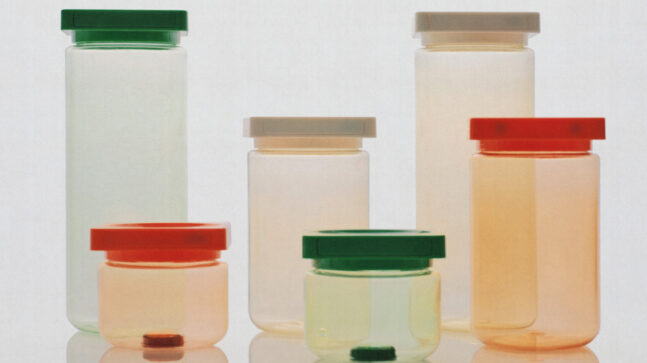According to the great philosopher Ron Swanson, there is no wrong way to consume alcohol. That’s true down to the part where he is immediately proven wrong when he’s presented with the wrong way to consume alcohol. Infused hand lotions aside, when people set out to drink whiskey, they’re generally going to do it one of four ways: neat, with water, on the rocks, or in a cocktail.
True whiskey drinkers know that there is no one “right” way to drink whiskey. That said, there are some purported experts out there who say that something in the whiskey is lost unless it’s consumed in a very specific way. It’s often an exclusionary way that sucks the joy out of the whole experience. It’s wrong to shame people for enjoying whiskey. Suck it out of a dirty sponge for all I care. That’s weird as hell, but if that’s what’s working for you, go for it.
Keep that in mind as you go through these four more popular ways of how to drink whiskey. These aren’t hard and fast rules to follow, they’re just beneficial if you’re looking to enjoy a pour in ways that cater to the positive elements already present in your whiskey. Because at the end of the day, the best way to drink whiskey is how you enjoy it most.

Whiskey Neat
This is the simplest way to drink whiskey. Pour it into a glass, then pour it out of the glass and into your mouth. There aren’t really many tricks to enjoying whiskey this way. A glencairn or rocks glass are some of the more popular glassware options, but there are plenty of whiskey glasses to choose from. The most important thing is what kind of whiskey you decide to pour in your mouth, rather than how to do it. Whether you’re into bourbon, rye, Irish whiskey, or Scotch, there’s no shortage of whiskeys that are good to drink neat.
Pop culture often posits this as the most romanticized way to drink whiskey. It’s what shows up in Peaky Blinders any time any Shelby is having even a remotely hard day, and it’s what Don Draper swirls as he marinates in the double-edged sword that is post-war masculinity.
This romanticization is deepened by the assumption that neat is how the men and women making whiskey intend their product to be drunk. They put all that time and effort into producing the whiskey, including the precise math meant to figure out how much to proof their whiskey down with water, to showcase the intended flavors. But talk to a handful of distillers and you’ll quickly learn that they want you to drink it the way that you like it (within reason, of course).
Putting all that aside, whiskey neat is undeniably an uncomplicated way to appreciate the result of a ton of hard work. It gives an honest impression of the whiskey because there’s nothing to hide the drink’s faults. It’s being poured out of a bottle, into a glass, and into your mouth. You’re drinking whatever the distillery sold you, hopefully for better, sometimes for worse.

Whiskey with Water
There’s a bit of science behind diluting whiskey, and a few drops of water can open up a whiskey’s flavor. What’s happening when you add those couple drops to your whiskey is you’re giving space for the molecules responsible for aroma room to evaporate. Since the nose is as (if not more) responsible for taste as the mouth is, releasing those aroma molecules means your senses literally have more access to the notes in a particular whiskey.
The caveat here is that distilleries already add water to whiskey. It’s called proofing, and it’s how distillers make sure that the whiskey is at the desired ABV. Higher proof whiskeys, like cask strength and bonded whiskeys, will generally benefit from adding a touch of water, but your standard 80 proof whiskeys are already proofed down quite a bit and won’t see as much positive change.
That 80 proof bottom limit is subject to personal taste though. For some people, that’s still high enough that the whiskey has an unpleasant burn or boozy taste to it. Generally speaking, if you’re looking to skip the burn, water your whiskey down. You’ll get a better sense of the nuances of the taste and cut down on the unpleasantness.

Whiskey on the Rocks
When you’re talking about whiskey on the rocks, you’re talking about a couple of different scenarios. Some people are very specific about the amount of ice to be put in the glass, whether that’s one big cube of ice, a few cubes, or a full glass of ice (which may sound like blasphemy to purists). Regardless of your ice choice, there’s one important thing to remember: cold puts a damper on flavor and aroma. So while it might be nice to drink the perfect whiskey on the rocks on a hot day, the whiskey itself will be muted.
That doesn’t mean adding ice is always a negative, of course, though adding more than one to three ice cubes does seem to be more about the auditory experience than any olfactory benefit. The main thing a few ice cubes do is make it fun to swirl the ice around and make them clink off the sides of the glass. It makes the pauses in your conversations all that much more poignant and lets your guests know you’re contemplating their insightful comments with the appropriate respect.
Filling the glass with ice, on the other hand, essentially covers the taste of the whiskey. It’s probably not the best choice if you splurged on a nice bottle and want to enjoy it as it was intended.
However, with a regular, run of the mill whiskey, you’re probably not buying it for an in-depth tasting. Ice is practical in most drinking occasions. It extends the life of the whiskey, so you can sip longer without becoming too intoxicated, and it increases your water intake, which should stave off the worst of a hangover. It’s self-control, responsible drinking, hangover mitigation, and longer socialization all wrapped into one beneficial handful of ice.

Whiskey Cocktails
Cocktails force you to consider how the taste of your whiskey will interact with the other ingredients, while also considering what parts of the whiskey those ingredients might bring to the fore.
Take the ridiculously simple and delicious whiskey spiked lemonade. Using a bourbon emphasizes the lemonade’s sweetness. Rye’s spicy and herbal notes, on the other hand, cut the sweetness some. The same concept goes for any whiskey cocktail, even down to a more granular bottle-by-bottle level — different bourbons will make different tasting bourbon Old Fashioneds, for example.
All told, mixing whiskey cocktails will make you more conscientious of the major differences between whiskey styles and the subtle differences between whiskeys within the same style. It could end up being that an Old Fashioned made with rye brings out unexpected flavors that you never knew were there and gives you a new appreciation for a style that you never had much time for before. Conversely, you may figure out that you thought you loved Buffalo Trace, but a Manhattan made with Redemption completely changes the way you shop. What it all comes down to, as with all things whiskey, is exploring enough variations to find what you like most.





